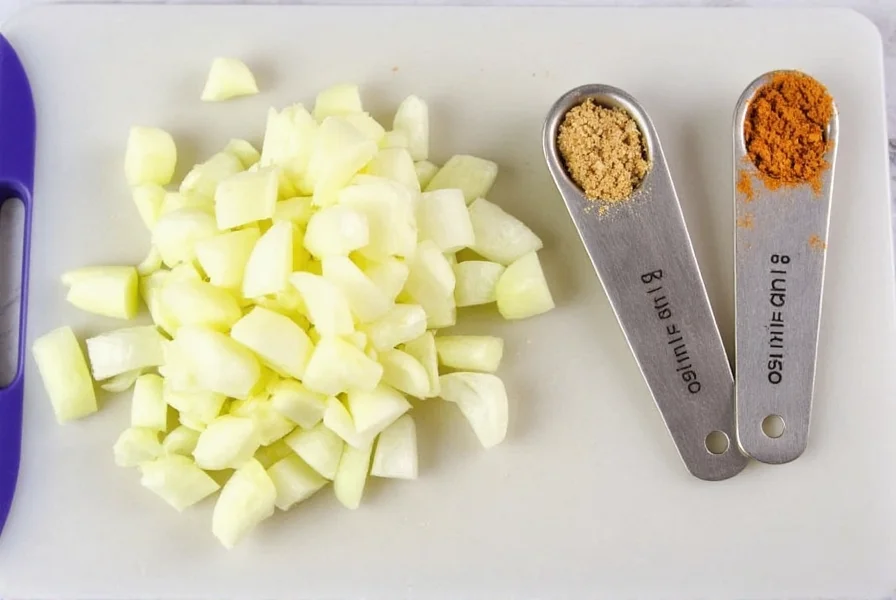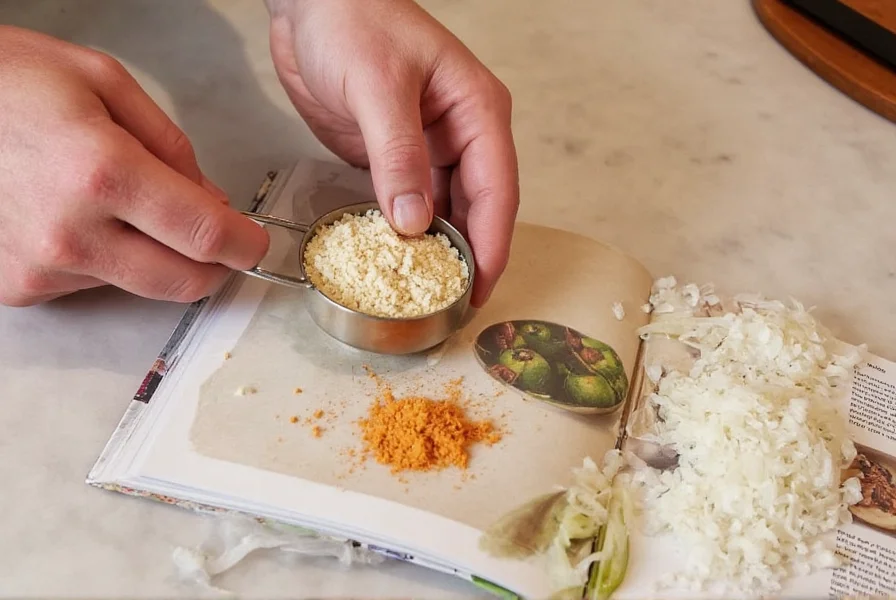Running out of onion powder mid-recipe doesn't have to ruin your cooking. Understanding proper substitutions ensures your dishes maintain the savory depth onion powder provides without compromising texture or flavor balance. This guide covers practical alternatives with precise measurements and usage tips for every kitchen scenario.
Why Onion Powder Matters in Cooking
Onion powder delivers concentrated onion flavor without added moisture, making it ideal for spice rubs, dry marinades, and shelf-stable recipes. Its fine texture distributes evenly through dishes, providing consistent flavor without the texture of fresh onion pieces. When seeking an onion powder replacement, consider both flavor intensity and moisture content to maintain your recipe's integrity.
Top Onion Powder Substitutes Ranked by Effectiveness
Not all substitutes work equally well in every application. These alternatives are ranked by versatility, flavor match, and ease of use for most cooking applications.
1. Fresh Onions (Best All-Around Substitute)
Fresh yellow onions provide the closest flavor profile. Use this conversion: ¼ cup finely minced onion = 1 teaspoon onion powder. For recipes requiring dry ingredients (like spice rubs), sauté the fresh onion first to remove excess moisture. White onions work similarly but are slightly sharper, while sweet onions like Vidalia offer milder flavor.

2. Onion Flakes (Best for Dry Applications)
Dehydrated onion flakes reconstitute easily and maintain texture better than powder. Use 1 tablespoon onion flakes = 1 teaspoon onion powder. They work particularly well in soups, stews, and casseroles where some texture is acceptable. For spice blends, pulse flakes in a spice grinder to approximate powder consistency.
3. Shallots (Best for Delicate Dishes)
Shallots offer a more nuanced flavor that works well in sauces and dressings. Substitute ⅔ teaspoon minced shallot = 1 teaspoon onion powder. Their milder taste makes them ideal for egg dishes, seafood recipes, and vinaigrettes where strong onion flavor would overpower other ingredients.
4. Garlic Powder (Flavor-Altering Option)
While not identical, garlic powder provides similar umami depth in a pinch. Use ½ teaspoon garlic powder = 1 teaspoon onion powder, but recognize this will change your dish's flavor profile. This substitution works best in heartier dishes like chili, meatloaf, or tomato-based sauces where garlic complements other flavors.
Onion Powder Substitution Reference Chart
| Substitute | Conversion Ratio | Best For | Limitations |
|---|---|---|---|
| Fresh yellow onion | ¼ cup minced = 1 tsp powder | Soups, stews, sauces | Adds moisture; sauté first for dry applications |
| Onion flakes | 1 tbsp = 1 tsp powder | Spice rubs, dry mixes | Slightly different texture; may need grinding |
| Shallots | ⅔ tsp minced = 1 tsp powder | Dressings, delicate sauces | Milder flavor; use less than onion |
| Onion salt | ½ tsp = 1 tsp powder | Seasoning blends | Contains salt; reduce added salt elsewhere |
| Leek powder | 1:1 ratio | Creamy dishes, potatoes | Milder flavor; harder to find |
Special Consideration Substitutions
Low-Sodium Cooking Needs
When avoiding onion salt due to sodium concerns, increase fresh onion quantities by 50% to compensate for flavor loss. For example, use 3 tablespoons minced onion instead of 1 teaspoon onion powder. Roasted garlic puree (1:1 ratio) also provides savory depth without sodium.
Keto and Low-Carb Recipe Adjustments
For keto diets, concentrate fresh onion flavor by simmering ½ cup minced onion until reduced to 2 tablespoons. This onion powder replacement for keto recipes maintains flavor intensity without excess carbohydrates. Freeze portions in ice cube trays for convenient use.
Gluten-Free Spice Blends
Many commercial onion powders contain anti-caking agents with gluten. Create your own substitute by dehydrating onion slices at 140°F for 6-8 hours, then grinding to powder. This homemade onion powder alternative ensures purity for gluten-sensitive diets.
When Substitutions Won't Work
Certain applications require onion powder's specific properties. Avoid substitutions in:
- Dry spice rubs for immediate cooking (fresh alternatives add moisture)
- Commercial seasoning blends requiring precise shelf stability
- Recipes specifically designed around powder's dissolution rate
In these cases, consider making your own onion powder by dehydrating and grinding fresh onions - the most reliable onion powder substitute measurements chart follows 3 cups fresh onion = ¼ cup powder.
Pro Tips for Successful Substitution
Professional chefs recommend these techniques when using onion powder alternatives:
- For baked goods, use double the amount of caramelized onion puree to replace powder
- Add fresh onion substitutes 5-10 minutes earlier than recipe timing for powder
- When substituting in dry mixes, reduce liquid ingredients by 1-2 teaspoons per substitute used
- For the best onion powder replacement in spice blends, toast fresh alternatives before incorporating

Frequently Asked Questions
Can I use onion salt instead of onion powder?
Yes, but use half the amount (½ tsp onion salt = 1 tsp onion powder) and reduce other salt in the recipe by ¼ tsp. This low sodium onion powder replacement works well in most savory dishes but isn't suitable for salt-restricted diets.
What's the best onion powder substitute for French onion soup?
For French onion soup, use ½ cup additional caramelized onions per teaspoon of missing powder. The slow cooking process allows fresh onions to develop the same depth of flavor that powder would provide instantly.
How do I substitute onion powder in meatloaf?
In meatloaf, use 2 tablespoons finely minced fresh onion per teaspoon of powder. For better texture distribution, sauté the fresh onion first to remove excess moisture, which prevents the meatloaf from becoming too wet during baking.
Can I make my own onion powder substitute at home?
Absolutely. Dehydrate sliced onions at 140°F for 6-8 hours until brittle, then grind in a spice grinder. Three cups fresh onion yields approximately ¼ cup powder. Store in an airtight container for up to 6 months - this homemade onion powder alternative beats store-bought for flavor intensity.
What's the difference between onion powder and onion salt?
Onion salt is typically 3 parts salt to 1 part onion powder by volume. When substituting between them, use half the amount of onion salt compared to powder and adjust other salt in the recipe. This distinction is crucial for proper onion powder vs onion salt conversion in recipes.










 浙公网安备
33010002000092号
浙公网安备
33010002000092号 浙B2-20120091-4
浙B2-20120091-4